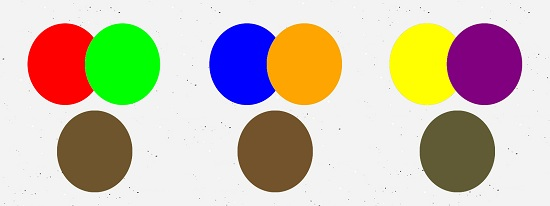How To Make Brown Paint
Brown is one of the most essential hues to master properly. For things like wood and trees, hair, skin tones, animals, and creating light effects and transitions in paintings, various brown tones are required. Knowing how to create brown paint is crucial if you want your artwork to come alive. Knowing how to make brown paint, unfortunately, is a little more complicated than most colours. We'll look at what colours make brown paint and how to create a variety of hues of this versatile colour. So get your paints and accessories and dive right into it.
Understanding the Brown Colour Palette
Brown is a broad term that encompasses a variety of hues. A brown eye for example, might look very different to a piece of light brown wood. Brown has many distinct nuances, so comprehending the whole colour palette is essential. Browns can also be light, dark, cool, warm, and tinted with a variety of colours - such as yellow or orange.
When it comes to any colour, there are three critical components to comprehending the hue's makeup. These are:
- Hue: The dominant colour group or main colour.
- Intensity/Saturation: This describes how bright, vibrant or dull the colour is.
- Colour Value: How light or dark a certain colour is. E.g. Light brown, dark brown and those in between.
What Two Colours Make Brown?
There are a few possible combinations of primary and secondary colours that you can use to create brown paint, these are:
- Yellow + purple = brown
- Green + red = brown
- Blue + orange = brown

How To Make Different Shades of Brown Paint
Light Brown: Begin with a yellow and purple foundation. To make a lighter tone, add some titanium white paint to your mixed brown, adjust as necessary to get the shade you desire. Adding some cadmium yellow will create a somewhat brighter brown that is light and warm.
Cool Brown: To create a colder brown, start with blue and orange and then add in cold hues like greens and purples. Blue tints such as ultramarine blue produce an almost foggy colour, similar to brackish water. Combining dark blues will result in a colour that is similar to slate, while adding purple hues will create a lighter brown with the appearance of dusty lavender.
Warm Brown: Brown hues can incorporate earth tones, such as russet or yellow ochre. To create a warmer brown, add more of the warm colours to a red and green, yellow and purple, or orange and blue base. Adding cadmium red will result in a more brilliant, crimson brown that resembles a sienna colour, more orange can produce a burned umber, and combining additional yellow may generate a light, murky brown.
Dark Brown: You can make a darker brown, similar to a rich chocolate brown, by mixing two opposite colours (red and green are ideal) before swirling in some black paint. You may also add reds for warmer darker tones or blues for cooler darker tones.
Quick Tip: If you want to make a light brown colour, simply add some white to your mixture. Just be careful when doing this, as you can always add more white but taking out white can be a bit more tricky.
There you have it, we hope you’ve learnt a thing or two about how to make brown paint and a few extra little hints and info along the way. If we’ve inspired you to get creative you can find our handy paint supplies here, including acrylic paints, oil paints, watercolour paints and gouache paints. Plus what’s paints when you don’t have brushes? Check out our brush range here, including acrylic brushes, oil brushes, watercolour brushes and even brush sets!
Related Articles

